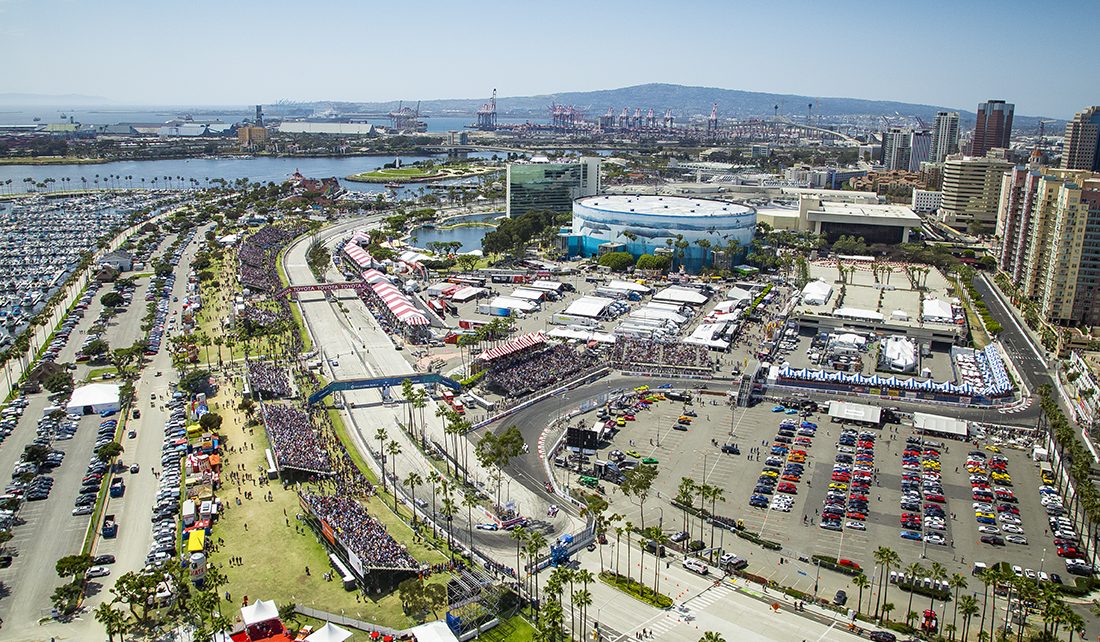During one of the many race nights of GTM’s VRL Series 12, we got to chatting about “Street Races” some of us have been to the Baltimore Grand Prix, Belle Isle, and even driven the Long Beach Circuit – when it’s just public roads. Then someone said, isn’t Bathurst considered a street circuit? And that got us thinking…
Be definition “a street race is a Motorsport racing circuit composed of temporarily closed-off public roads of a city, town or village, used in motor races. Facilities such as the paddock, pit boxes, fences and grandstands are usually placed temporarily and removed soon after the race is over but in modern times the pits, race control and main grandstands are sometimes permanently constructed in the area. Since the track surface is originally planned for normal speeds, race drivers often find street circuits bumpy and lacking grip. Run-off areas may be non-existent, which makes driving mistakes more expensive than in purpose-built circuits with wider run-off areas.” – Alrighty… thanks Wikipedia, for that very thorough explanation.

Unlike the “illegal street racing” akin to the Fast and the Furious (above), racing through streets in the early days of Motorsport was very common. Outside of factory test tracks like Ehra-Lessien, Avus in Berlin (which btw, also happens to be composed of public streets) and others; there wasn’t much in the way of “formal race tracks” so it makes sense that the only option for racing was what we consider today: a Time-Distance Rallye … until places like Monza, Indianapolis and Brooklands were built.
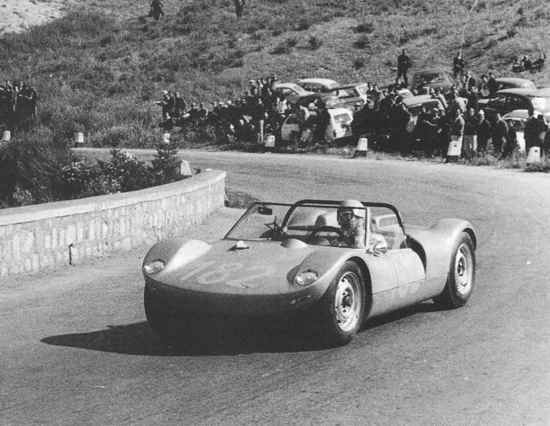
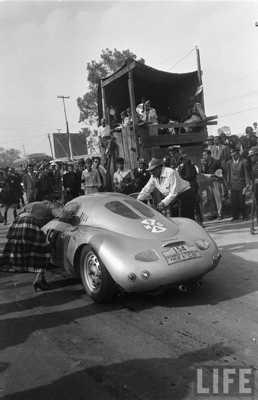
Since the heart of early motor racing (as we learned through French Appreciation Week) is centered in Europe, it was up to them to set the stage (rallye pun, intended). Early street racing evolved quickly from racing around towns, to city-to-city endurance races like the Targa Florio (above:left), the Carrera-Panamericana (above:center) and the Mille Miglia (above:right). The next step was to utilize longer stretches of road creating a lap around an area so that fans could gather and see the cars pass by more than just once. This idea gave way to the Monte Carlo Grand Prix, LeMans and the Nurburgring. We still see some use of public roads for point-to-point racing today with events like: Pikes Peak and the Isle of Mann TT. But what we’re really interested in are “the circuits.”
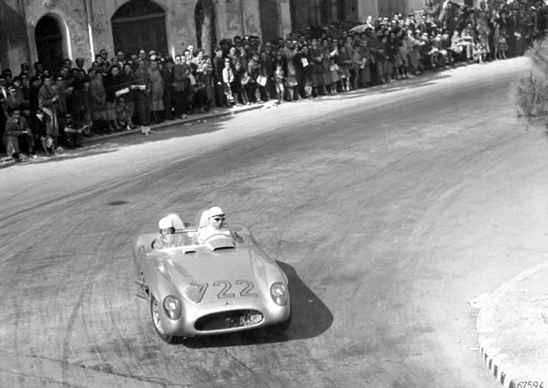
Monaco
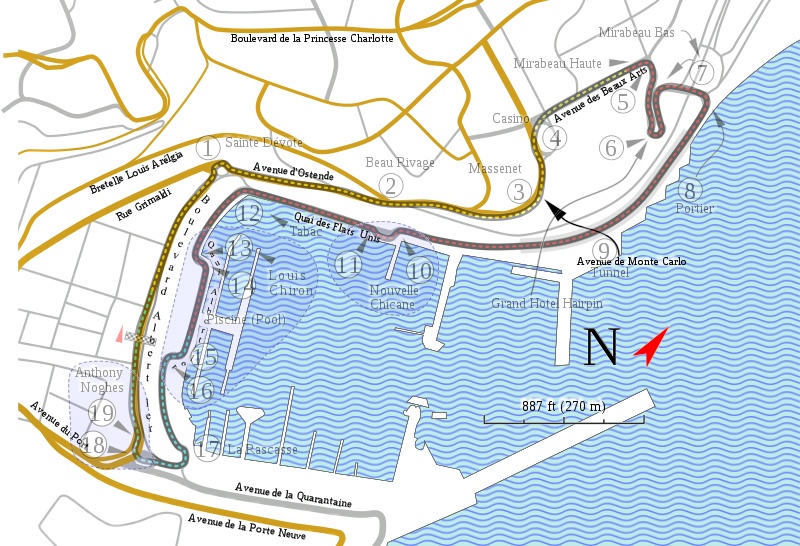
Probably one of the most famous street circuits, the Grand Prix de Monaco is now aligned primarily with Formula One and held annually on the streets of Monaco on the last weekend in May. Run since 1929, it is widely considered to be one of the most important and prestigious automobile races in the world and is one of the races (along with the Indianapolis 500 and the 24 Hours of Le Mans) that form “the Triple Crown of Motorsport.”
As you can see from the video above, on-board with Senna, at the 1990 Monaco GP the race is held on a narrow course laid out using the streets along the coast, with many elevation changes and tight corners as well as a tunnel, making it one of the most demanding tracks in Formula 1. In spite of the relatively low average speeds, the Monaco circuit is a dangerous place to race. Note: If the video above did not load: click here.
Le Mans
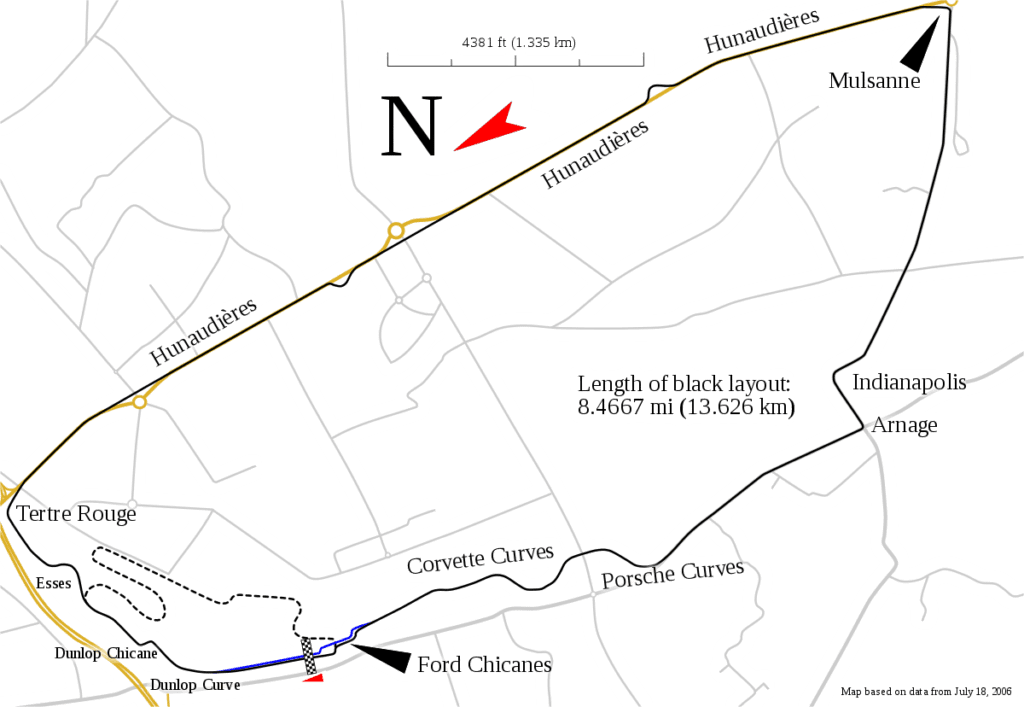
The 24 Heures du Mans is the world’s oldest active endurance race, it has been held annually since 1923 near the town of Le Mans, France. Nicknamed the “Grand Prix of Endurance and Efficiency,” the circuit on which the 24 Hours of Le Mans is run, is officially known as the Circuit de la Sarthe – but many of us just refer to it as “LeMans.” – Watching the on-board footage from 1956 (below), where Jaguar team driver Mike Hawthorn records a lap of la Sarthe, you’ll see just how “street” LeMans really was compared to the race we know today.
LeMans has been extensively modified over the decades. Originally the circuit entered the town of Le Mans, but the track was cut short in order to better protect spectators. Mostly for safety reasons, la Sarthe clocks in at a healthy 8.47 miles and consists of both permanent track and public roads that are temporarily closed for the race.
Bathurst
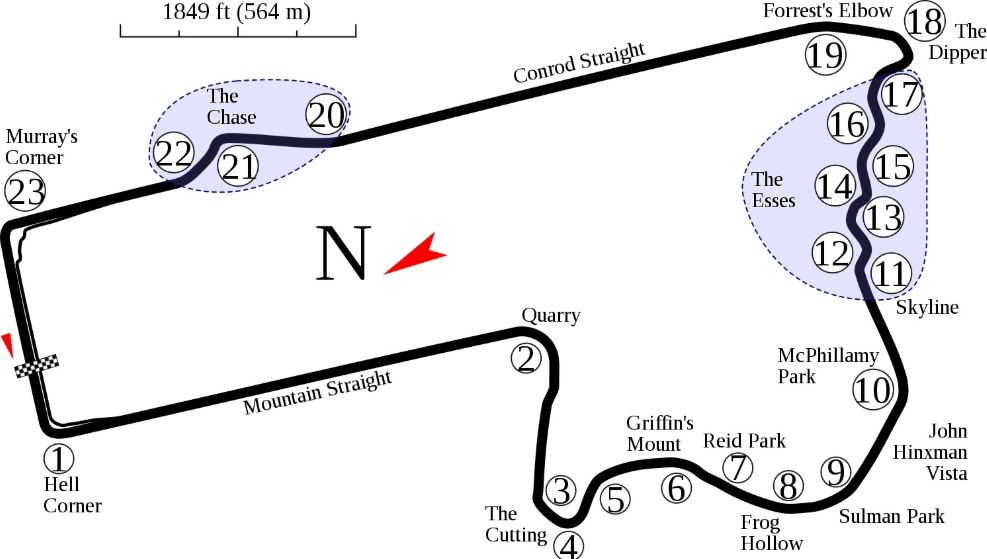
The Bathurst 1000 (aka “the 12 hours of Bathurst”) is a 1,000-kilometre (620 mi) touring car race held annually since 1963 on the Mount Panorama Circuit better known to most of us as just “Bathurst” because of its location in Bathurst, New South Wales, Australia. The 12 hrs of Bathurst is widely regarded as the pinnacle of Motorsport in Australia, and is locally known as The Great Race among Motorsport fans and media. As you can see from members Mike C and Chrissy C video below, (from their trip to Australia in 2019), the track may seem like a dedicated facility on TV, but in reality… its just public roads.
The Nürburgring
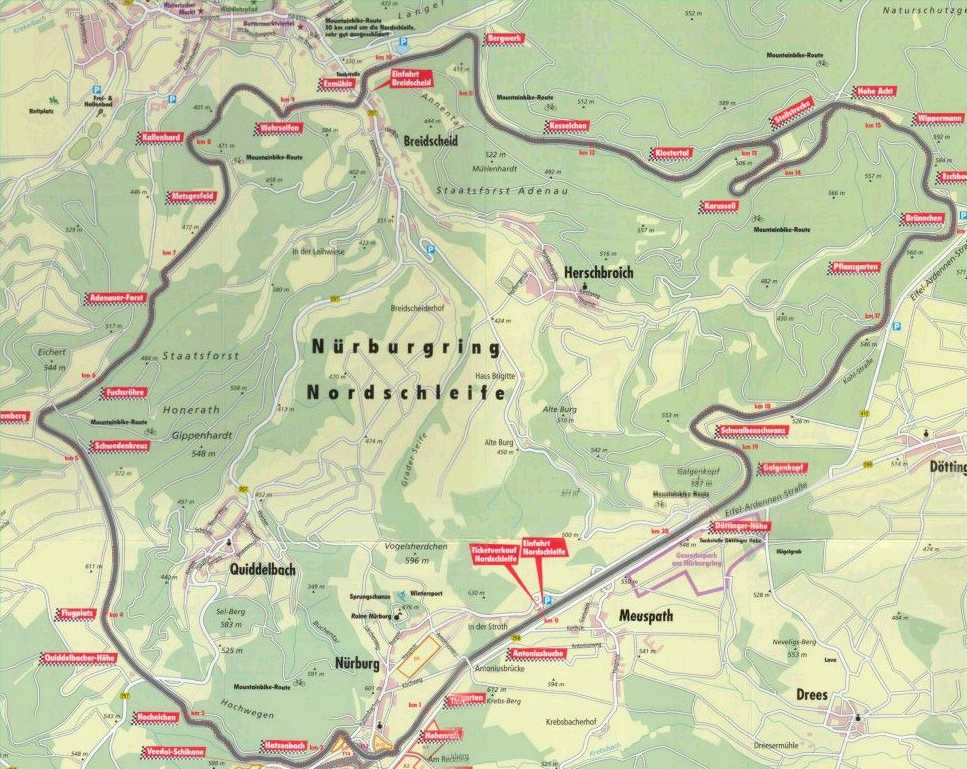
More affectionately known as “The Ring” in many circles, originally the track featured various configurations: the 17.56 mile long Gesamtstrecke (Whole Course) was cut down to the 14.17 mile Nordschleife (North Loop, the one we all know/love), loosing the 4.81 mile Südschleife (South Loop), 1.42 miles warm-up loop called Zielschleife (Finish Loop) and the Betonschleife (Concrete Loop).
In 1982, the start/finish was remodeled to create the GP-Strecke (Nürburgring GP Circuit) which is used for major and international racing events. You can search the internet for “laps of the Ring” but nothing beats the Sabine Schmitz lap in a Transit van from Top Gear (above).
The Nordschleife is still used for racing (like the 24 hrs of the Ring usually held 1 week after LeMans), but its still considered a one-way public TOLL road, with many people lapping and testing every day. Below: Members Mike C and Chrissy C driving their BMW 1-series through the Karussel at The Ring.
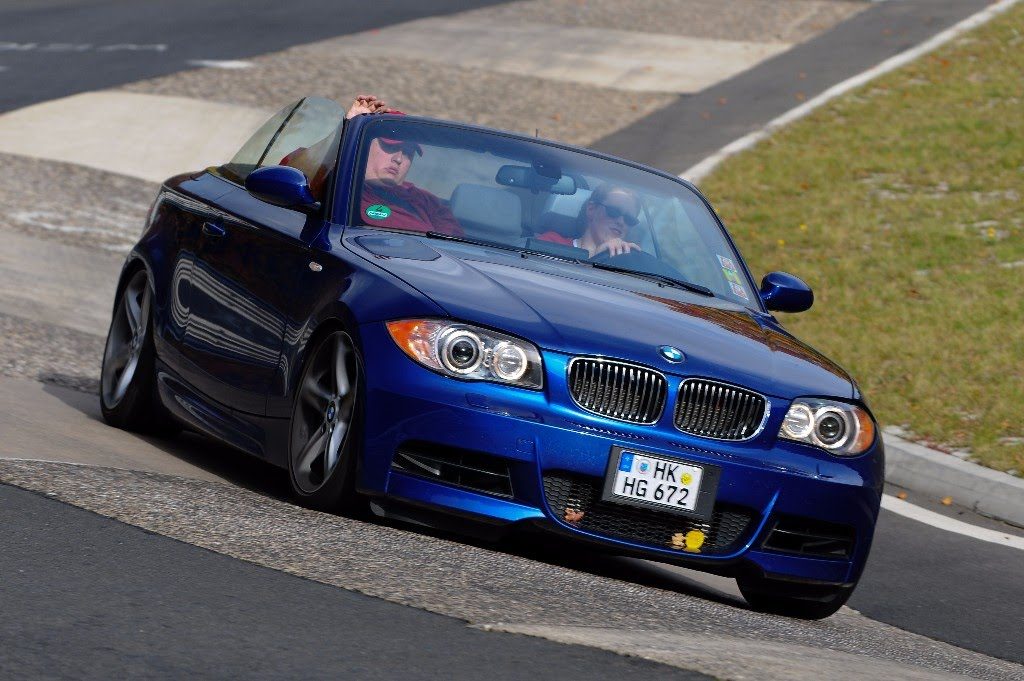
Long Beach
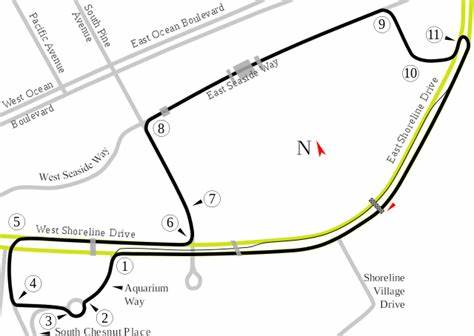
The Grand Prix of Long Beach has been used for IMSA, SCCA TransAm, IndyCar and other series racing since 1975 on the streets of Long Beach in Southern California. The Long Beach Grand Prix is actually the longest running major street race held in North America. Below, Joey Hand in the No. 66 Ford Chip Ganassi Racing Ford GT talks us through a lap around the famous Long Beach street circuit.
Long Beach was even used as a Formula 1 race in 1976! – It was considered the premier race on the IndyCar (CART/Champ) calendar from 1996 to 2008 and is one of the longest continuously-running events on the IndyCar schedule and is still considered one of the most prestigious events of the season. If you’re ever on a visit to Southern California, make sure you map a trip to Long Beach to check out the circuit and drive the entirety of the track via the public roads, its pretty cool!
Detroit (Belle Isle)
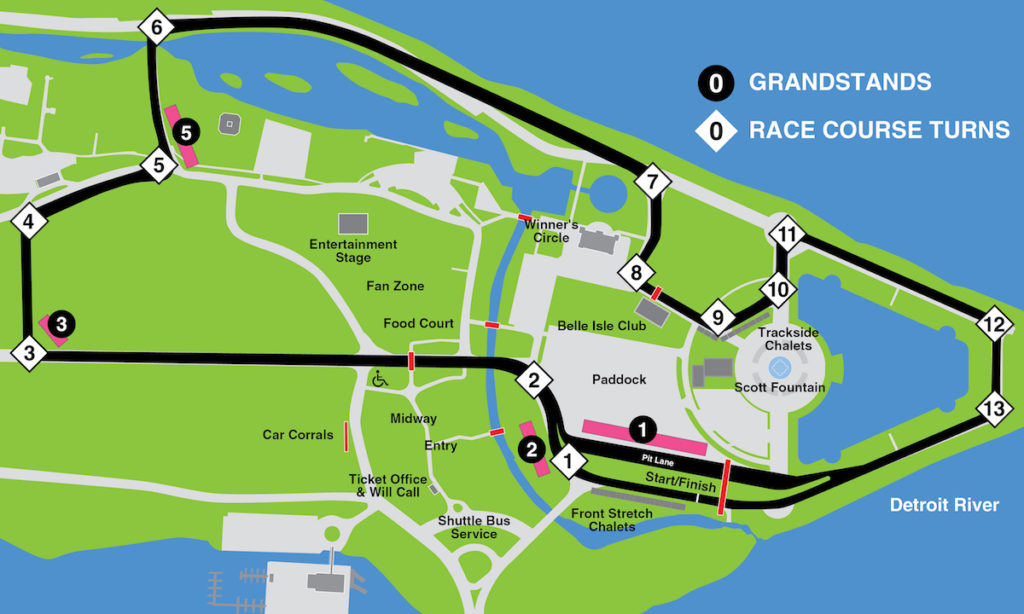
In 1982, the U.S. became the first and only country to host three World Championship Grands Prix in one season. In addition to the United States Grand Prix West (Long Beach) and the Las Vegas races, a new event was held in Detroit, Michigan on a street course encompassing General Motors HQ and Renaissance Center. To get a feel for Belle Isle, lets take a moment and watch (below) a few record breaking laps around the circuit with Graham Rahal!
The original circuit had seventeen corners in 2.49 miles, including two very tricky hairpins and a tunnel that enclosed a gentle right-hand bend next to the river, which proved to be even slower than Monaco. The race soon gained a reputation for being horrendously demanding and grueling, very bumpy, and often breaking up badly under the consistently hot and very humid weather; it was perhaps the single hardest race for a car and driver in the IndyCar series.
Baltimore Grand Prix
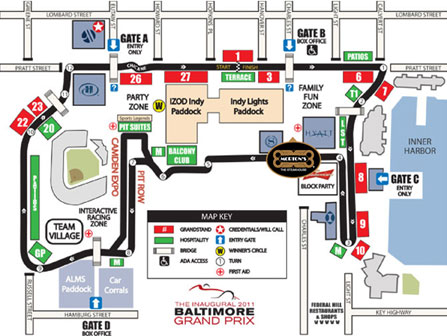
For those of us at GTM that live in the DMV (Washington DC, Maryland and Virginia area), the Grand Prix of Baltimore hit very close to home. The Baltimore GP is considered one of the newest “street races” in North America and was held from 2011-2013. The circuit was developed using the streets of downtown Baltimore, Maryland circling the area around Camden Yards (home of the Orioles baseball team), the Baltimore Convention Center in the area better known to us as “the inner harbor.” – Watching the video below taken from Team Corvette, gives you a good idea of how the circuit flowed, including a pit-stop.
The Baltimore GP was used primarily for IndyCar and IMSA racing. The inaugural race was held on September 4, 2011 and ESPN said it was the best inaugural street race in North America in the last 30 years. Unfortunately, the Baltimore GP was short lived and received with mixed feelings every year: sighting issues with residents, street surfaces, course layout, funding, etc – proving that in some cases, street circuits aren’t always “the best idea.”
Honorable Mentions
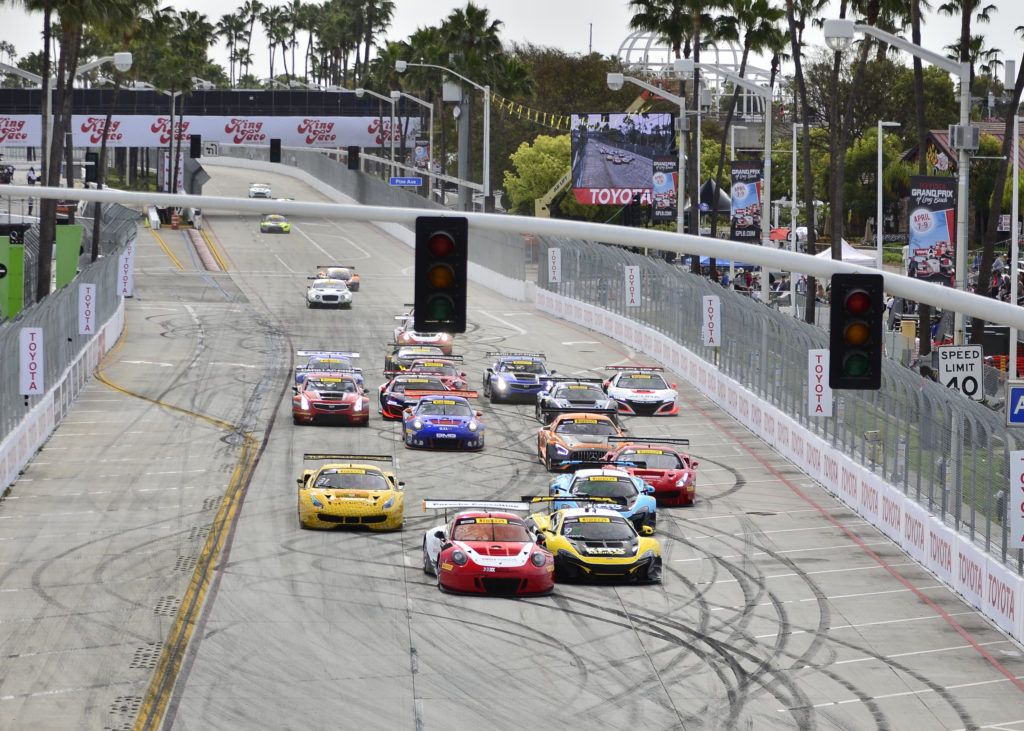
During our research the list of street circuits was surprisingly long, and Wikipedia keeps a rather detailed list of all of them. But if you want to learn more, here are some others you may have heard of and should peak your interest:
- Edmonton Street Circuit
- Houston Street Circuit at NRG Park
- St. Petersburg Street Circuit
- São Paulo Street Circuit
- Surfers Paradise Street Circuit (Australian F1 GP)
- Toronto Street Circuit
For most of us, traditional “road courses” are the preferred venue for racing. Street racing however, does provide a change in scenery, gets the action close to home, and definitely ups the risk factor #sendit. But we’ll leave you with one final thought … many might think that Street Circuits are a dying breed, but unfortunately, they would be wrong. Had it not been for the worldwide COVID-19 pandemic, April 2020 was supposed to launch the debut of the Formula 1: Grand Prix of Vietnam, set on the streets of Hanoi – check out the video below, to learn more. Note: If the video below did not load: click here.


